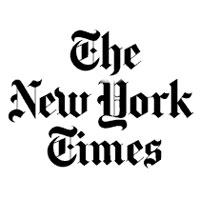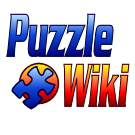On Friday, February 19, 2010, in Brooklyn, New York, the registration desk for the 33rd annual American Crossword Puzzle Tournament (ACPT) will open for business, marking the commencement of one of the single largest gatherings of puzzleheads from across the country.
Click here to discuss the ACPT in the Puzzlehead forums.
Part 3 – Evolution
 While crosswords became popular in the early 1920s, it was not until 1942 that The New York Times (which initially regarded crosswords as frivolous, calling them “a primitive form of mental exercise”) began running a crossword in its Sunday edition. The first puzzle, a Sunday, ran on February 15, 1942; the motivating impulse for the Times to finally run the puzzle (which took over 20 years despite the fact that its publisher, Arthur Hays Sulzberger, was a longtime crossword fan) appears to have been the bombing of Pearl Harbor: in a memo dated December 18, 1941, an editor conceded that the puzzle deserved space in the paper, considering what was happening elsewhere in the world and that readers might need something to occupy themselves during blackouts.
While crosswords became popular in the early 1920s, it was not until 1942 that The New York Times (which initially regarded crosswords as frivolous, calling them “a primitive form of mental exercise”) began running a crossword in its Sunday edition. The first puzzle, a Sunday, ran on February 15, 1942; the motivating impulse for the Times to finally run the puzzle (which took over 20 years despite the fact that its publisher, Arthur Hays Sulzberger, was a longtime crossword fan) appears to have been the bombing of Pearl Harbor: in a memo dated December 18, 1941, an editor conceded that the puzzle deserved space in the paper, considering what was happening elsewhere in the world and that readers might need something to occupy themselves during blackouts.
The puzzle proved popular, and Sulzberger himself would author a Times puzzle before the year was out. In 1950, the crossword became a daily feature. That first daily puzzle was published without an author line, and to this day the identity of the author of the first weekday Times crossword remains unknown.
There have been four editors of the puzzle: Margaret Farrar, who edited the puzzle from its inception until 1969, Will Weng, former head of the Times’s metropolitan copy desk, who edited the puzzle from 1969 to 1977, Eugene T. Maleska, who edited the puzzle until 1993, and the current editor, Will Shortz. Of the three former editors, Maleska alone held the position until his death.
In addition to editing the Times crosswords, Shortz founded and runs the annual American Crossword Puzzle Tournament as well as the World Puzzle Championship (where he remains captain of the US team), has published numerous books of crosswords, sudoku, and other puzzles, and serves as “Puzzlemaster” on the NPR show “Weekend Edition Sunday”.
The popularity of the puzzle has grown over the years, until it came to be considered the most prestigious of the widely circulated crosswords in America; its popularity is attested to by the numerous celebrities and public figures who’ve publicly proclaimed their liking for the puzzle, including opera singer Beverly Sills, author Norman Mailer, baseball pitcher Mike Mussina, former President Bill Clinton, conductor Leonard Bernstein, TV host Jon Stewart and music duo the Indigo Girls.
In addition to their appearance in the printed newspaper, the Times puzzles also appear online at the paper’s website, where they remain the only part of the paper’s content for which users need to pay for online access (unless they already subscribe to the printed version of the paper for home delivery). In 2007, Majesco released The New York Times Crosswords game, a video game adaptation for the Nintendo DS handheld. The game includes over 1,000 Times crosswords from all days of the week. Various other forms of merchandise featuring the puzzle have been created over the years, including dedicated electronic crossword handhelds that just contain Times crosswords, as well as cookie jars, baseballs, coasters, mousepads, and other items.
Will Shortz does not write the Times crossword himself. Instead the puzzles are submitted to him as the editor by a wide variety of contributors. Aside from the increasing difficulty throughout the week, the Monday-Thursday puzzles and the Sunday puzzle always contain a theme, some sort of connection between 3-5 long (usually Across) answers. The theme could consist of a similar type of pun in each theme entry, a similar type of letter substitution or alteration in each entry, or any of numerous other types.
Notable dates, e.g., holidays or anniversaries of famous events, are often celebrated with an appropriately themed puzzle, although only two holidays are currently commemorated on a routine annual basis: Christmas and April Fool’s Day. The Friday and Saturday puzzles, the most difficult in the paper, are routinely unthemed and are usually “wide-open”, with fewer black squares, and more long words.
Given the Times’s perception as a paper for a generally literate, well-read, and somewhat arty audience, puzzles frequently reference works of literature, art, or classical music, as well as modern TV, movies, or other touchstones of popular culture.
Next time – the American Crossword Puzzle Tournament
 I just added a new link for a very interesting site I just discovered called
I just added a new link for a very interesting site I just discovered called  I’ve added a gadget to the blog that detects if you’re reading this from an iPhone and reformats it accordingly.
I’ve added a gadget to the blog that detects if you’re reading this from an iPhone and reformats it accordingly.